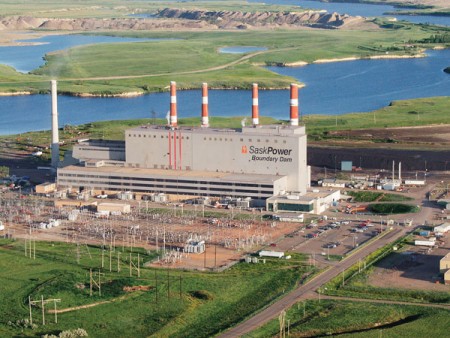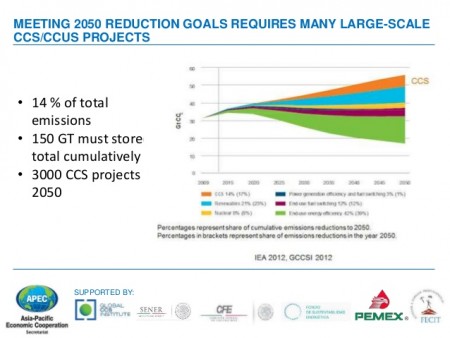December 1, 2015 – Today at the Paris climate talks carbon capture and storage (CCS) is on the agenda. The Premier of Saskatchewan will present to conference attendees the Boundary Dam Project and its operational achievements to-date. Boundary Dam until this last month or so is the most well known operational CCS site on the planet. It is designed to capture CO2 from a coal-fired power station near Estevan, Saskatchewan. The captured CO2 is being sold to oil producers for enhanced oil recovery. Beyond the capacity of the oil fields to take the produced CO2 the balance of the gas is being sent to an injection site known as the Deadwood Sandstone Formation made up of many layers of porous and non-porous rocks. The site is 3.4 kilometers underground and 2 kilometers west of the power plant. Saskatchewan has run a CCS research centre using this geological formation to store CO2 which theoretically upon exposure to sandstone turns into limestone. Since 2000 Saskatchewans has stored 22 million tons of CO2 in underground reservoirs and old oil wells which makes the province one of the premier CCS sites on the planet.
Not to be outdone early this November, Shell Canada brought online the Quest Project, a CCS facility in Alberta. Quest intends to capture and store 1 million tons of CO2 annually. Unlike Boundary Dam it isn’t selling CO2 to a third party. Instead Shell intends for the project to make money from the savings in carbon taxes which in Alberta currently run at$15 a ton and are slated to rise to $20 in 2017 and $30 in 2018, and thereafter at inflation plus 2% under that province’s new climate change policies.
A third CCS plant became operational this year in Saudi Arabia, the Uthmaniyah CO2-EOR Demonstration Project. It is capable of capturing 800,000 tons of CO2 annually with the gas being used for enhanced oil recovery.
A fourth located in Illinois is expected to become operational in 2016. It is expected to capture 1 million tons of CO2 annually from a biofuel ethanol plant and will store the gas in 2 kilometer deep sandstone formations. It is an enhancement of a pilot project that has successfully run for three years.
In addition to these there are 11 large-scale CCS projects in operation worldwide today with 7 more under construction and 11 more in advanced development. Total capacity of the 22 will be 40 million tons of CO2 annually, a drop in the bucket in terms of the amount entering the atmosphere annually.
Most sites use the captured CO2 to enhance oil recovery and offset development costs. Quest and the Illinois facility are exceptions and will remain so without universal adoption of carbon pricing to make mass use of CCS technology economically viable.
The United States Department of Energy has gone on record stating that current CCS technology needs CO2 to be priced at $70 to $90 per ton. No jurisdiction on the planet has yet to put that kind of pricing on carbon which suggests that the current projects in development exist because of government subsidy.
Some argue that the cost of CCS is far too great and that money would be better spent shuttering coal-fired power plants, transitioning existing power stations to natural gas and complimenting that strategy by developing new renewable energy and storage capacity which in the end would cost far less while reducing the amount of CO2 getting into the atmosphere.
Others have argued that using CCS technology for enhanced oil recovery contributes to more CO2 in the atmosphere. Why? Because for every ton of CO2 injected into an oil well, 2.7 tons of the gas will eventually be emitted through the combustion of the recovered oil.
The CCS proponents presenting at COP 21 today will argue that it this technology must be part of the mix in transitioning to a low-carbon future because:
- it can provide up to 14% of required emission reductions through 2050.
- a commitment to 3,000 CCS projects between now and 2050 would help meet target reductions as described above.
- without CCS achieving 450 ppm CO2 by 2100 would be 138% more costly.
But so far with 22 projects on record, the number 3,000 seems quite unattainable. Does this demonstrate a lack of will on the part of countries and industry? No. But it does show that without a price on carbon CCS is probably a doomed technical answer to reducing atmospheric CO2. So the call for realistic carbon taxes or a rigorous cap and trade system may be the only way to save CCS from being a sideline attempt to halt global warming.










